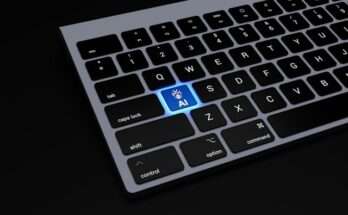here is a list of Which features can be added to a user interface design to help a user take action? User interface design plays a critical role in the user experience. It allows users to interact with an application or website in a way that is efficient, intuitive, and visually appealing. In order for users to take action, it is important for user interface designers to consider which features can be added to make the process easier and more engaging. In this blog post, we will explore which features can be added to a user interface design to help a user take action. We’ll look at various types of features and their impact on user experience.
Which features can be added to a user interface design to help a user take action?
- Buttons
- Icons
- Links
- Forms
- Tooltips
Buttons
When designing buttons, it is important to consider the types of actions a user will want to take and how these buttons should be labeled. Clear and concise labeling helps users identify which button to press in order to take the desired action. Additionally, it is important to ensure that the button is placed in a location on the page where it will be easily visible and accessible.
By adding buttons to a user interface design, developers can provide users with a clear path to take action and complete tasks within the system. This makes it easier for users to navigate through the system and complete tasks efficiently.

It is also important to consider the size, color, and shape of the button. By making the buttons prominent and easily visible, users will be able to quickly identify and press them without having to search for them. Additionally, using contrasting colors between the button and its background will make it easier for users to distinguish the button from its surroundings. Finally, giving the buttons distinct shapes, such as round or square, can also help users identify which button to press. By utilizing these elements, developers can create an intuitive user interface that makes it easier for users to take the desired action.
Icons
Additionally, icons can be used to indicate the presence of certain features within the user interface design. For example, a shopping cart icon can be used to let the user know that a shopping cart feature is available for use. Similarly, a profile icon can be used to indicate that a user profile feature is available. Using icons like this makes it easy for users to identify and use different features within the design. It also helps them find their way around the application more easily by providing visual cues as to what kind of content they might find in each area.
Another way you can make it easier for users to take action within the user interface is by adding call-to-action buttons. These are buttons that will appear on the page, often with words like Sign Up, Subscribe, Buy Now, or Download Wrote on them. They make it clear to the user what their next step should be and encourage them to take it. Call-to-action buttons are an important part of any good user interface design, so make sure you include them whenever possible.
Links
When designing a user interface, it is important to provide users with the tools they need to take action. To ensure that users are able to initiate an action easily, several features can be added to the user interface design.
First, consider adding links to any call-to-action elements in your design. This can include buttons, menus, or text that allow users to complete an action. Links should be easy to spot and should have a clear purpose. Be sure to test the link to make sure it takes the user to the right page.
Second, add visual cues like arrows or icons to direct users toward specific actions. This can be helpful if you want users to fill out a form, navigate through a process, or complete a task. Be sure to make the visual cues visually distinct from other elements on the page.
Third, include feedback forms or messages that let users know when their action has been completed. This can help keep users informed and reduce frustration.
Finally, don’t forget about keyboard shortcuts. Shortcuts can help speed up the process of taking an action and can be especially helpful for users who are not comfortable using a mouse or trackpad. By adding these features to your user interface design, you can ensure that your users are able to take action with ease.
Forms
When it comes to user interface design, forms are one of the most important features that can be added in order to help a user initiate an action. Forms provide a direct method for users to interact with the interface and take action. By providing forms within your design, users can quickly and easily enter in data or make selections, such as submitting a form to sign up for a service or filling out a contact form.
In addition to forms, there are other features that can be added to your user interface design in order to help a user take action. For example, buttons are great for triggering actions within your design and providing a visual cue for the user to take action. Menus can also be added in order to provide quick access to different areas of the interface and allow the user to quickly find what they are looking for.
By including forms, buttons, and menus within your user interface design, you can give users an easy way to initiate an action and help them complete tasks more quickly and efficiently.
Tooltips
Overall, tooltips are a great way to help users take action within a user interface design. By providing additional information and guidance, they can make it easier for users to complete their tasks and make the most out of your user interface design.
Another great way to make it easier for users to take action is by adding progress bars and notifications. Progress bars show users how much of their task is left, which can provide a helpful visual reminder of the goals they’re trying to achieve. Notifications, such as emails or push notifications, are also helpful for prompting users to complete an action. For example, if you’re designing an online shop, you might want to include email notifications when an item is out of stock so that users know when they can expect the product back in stock.




